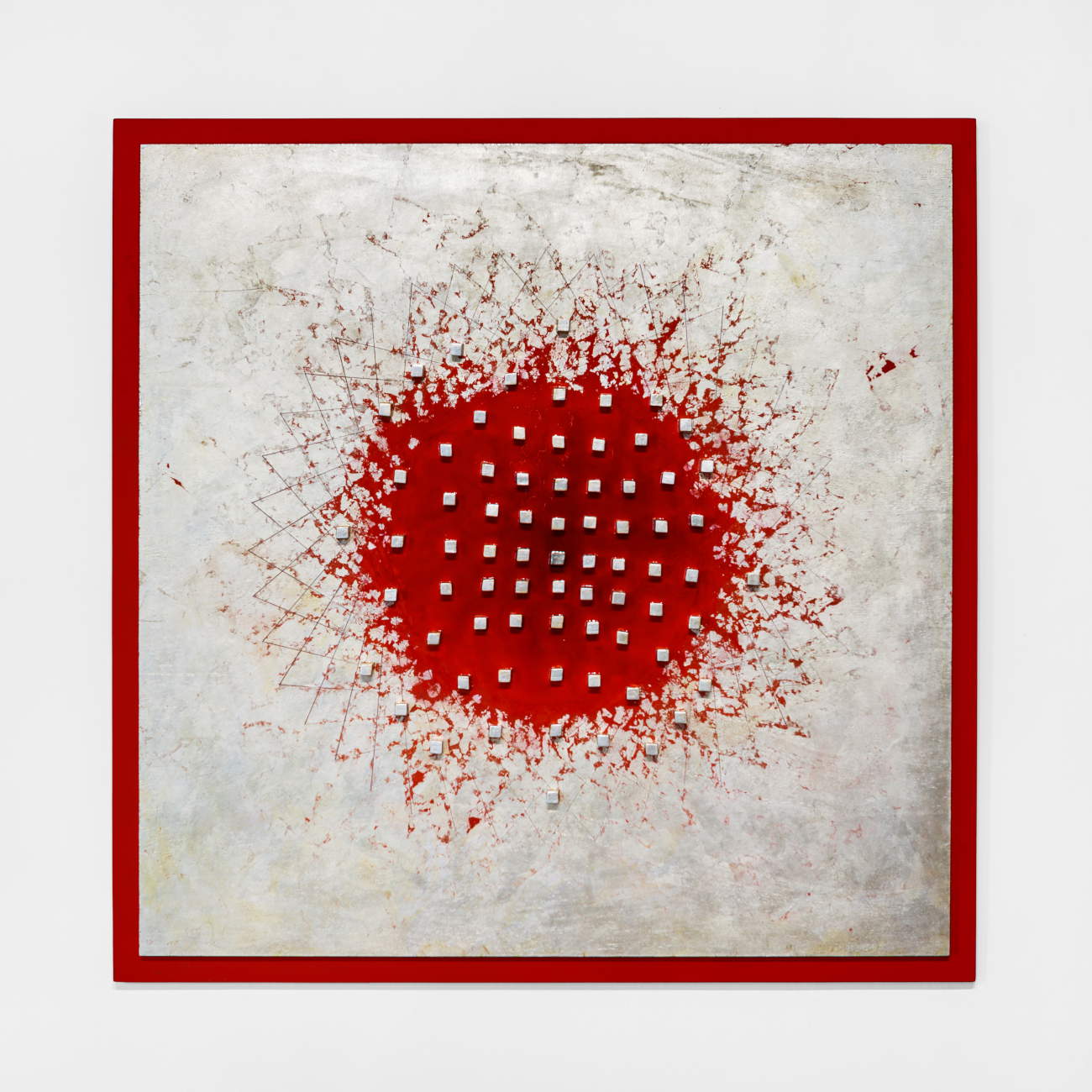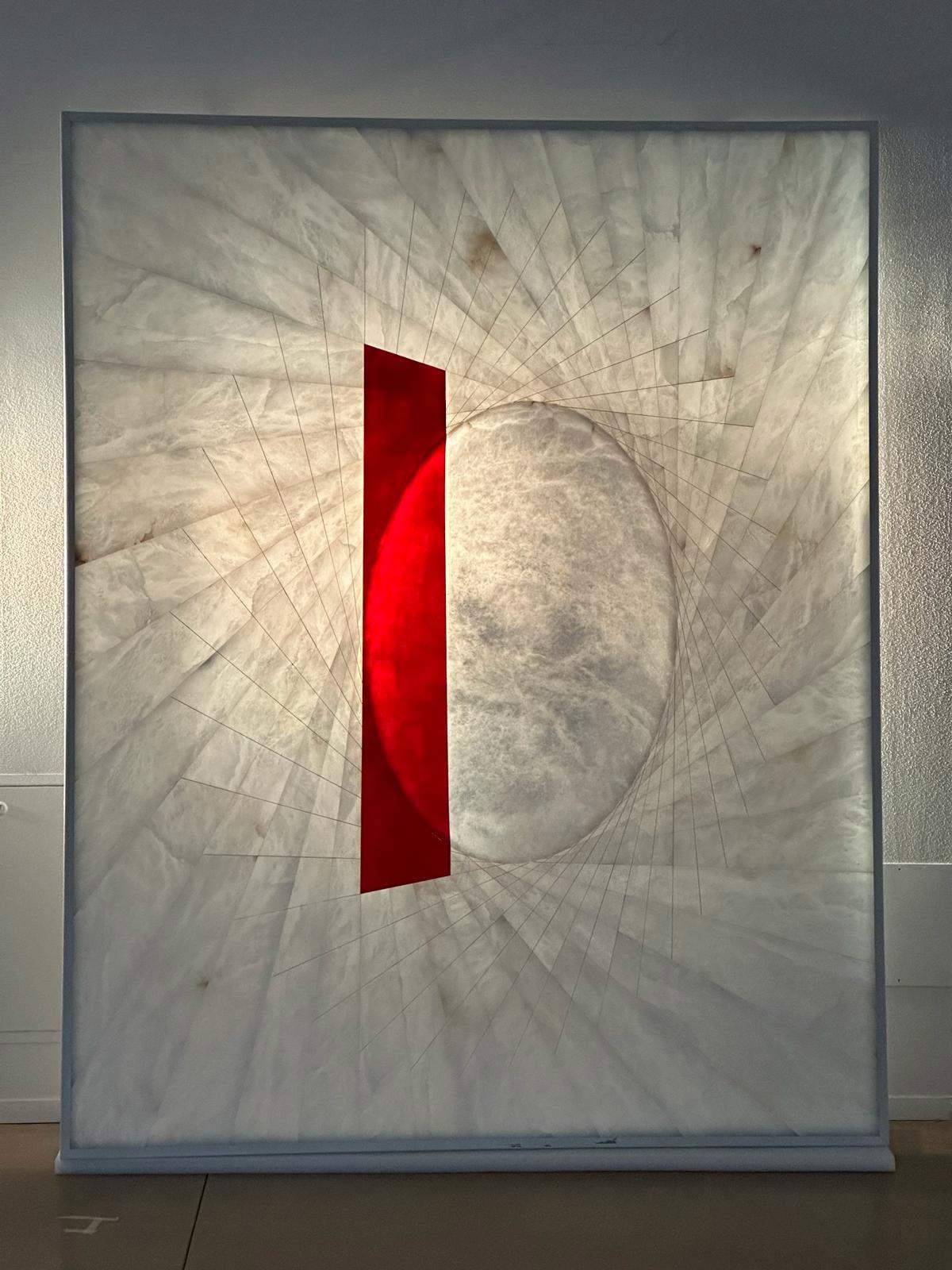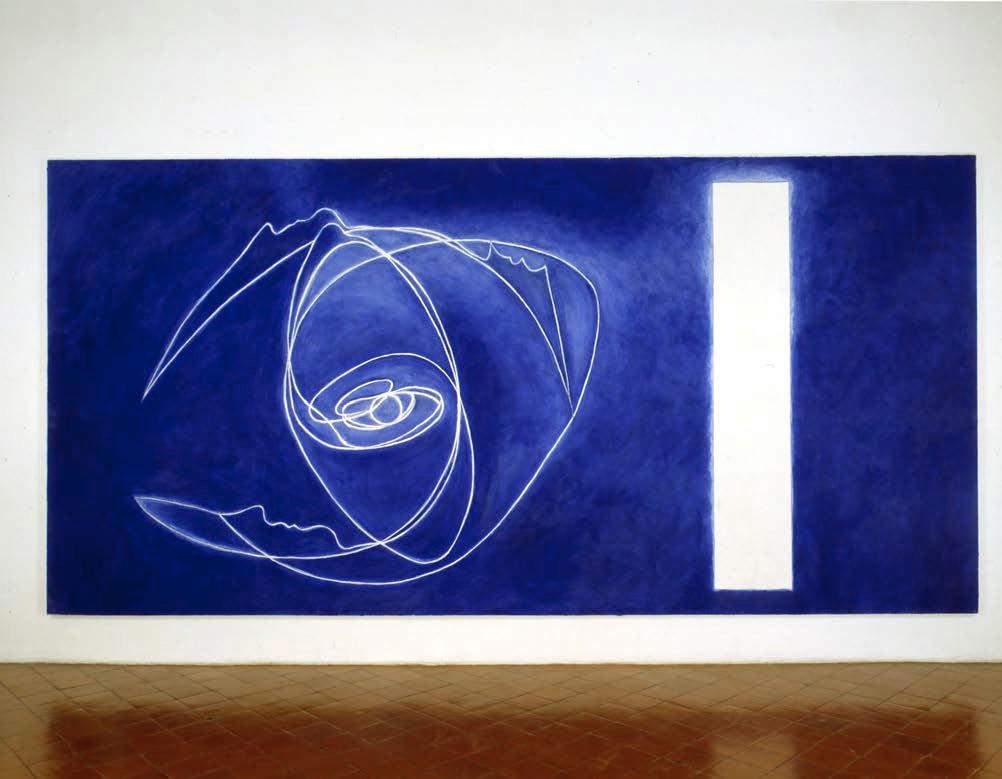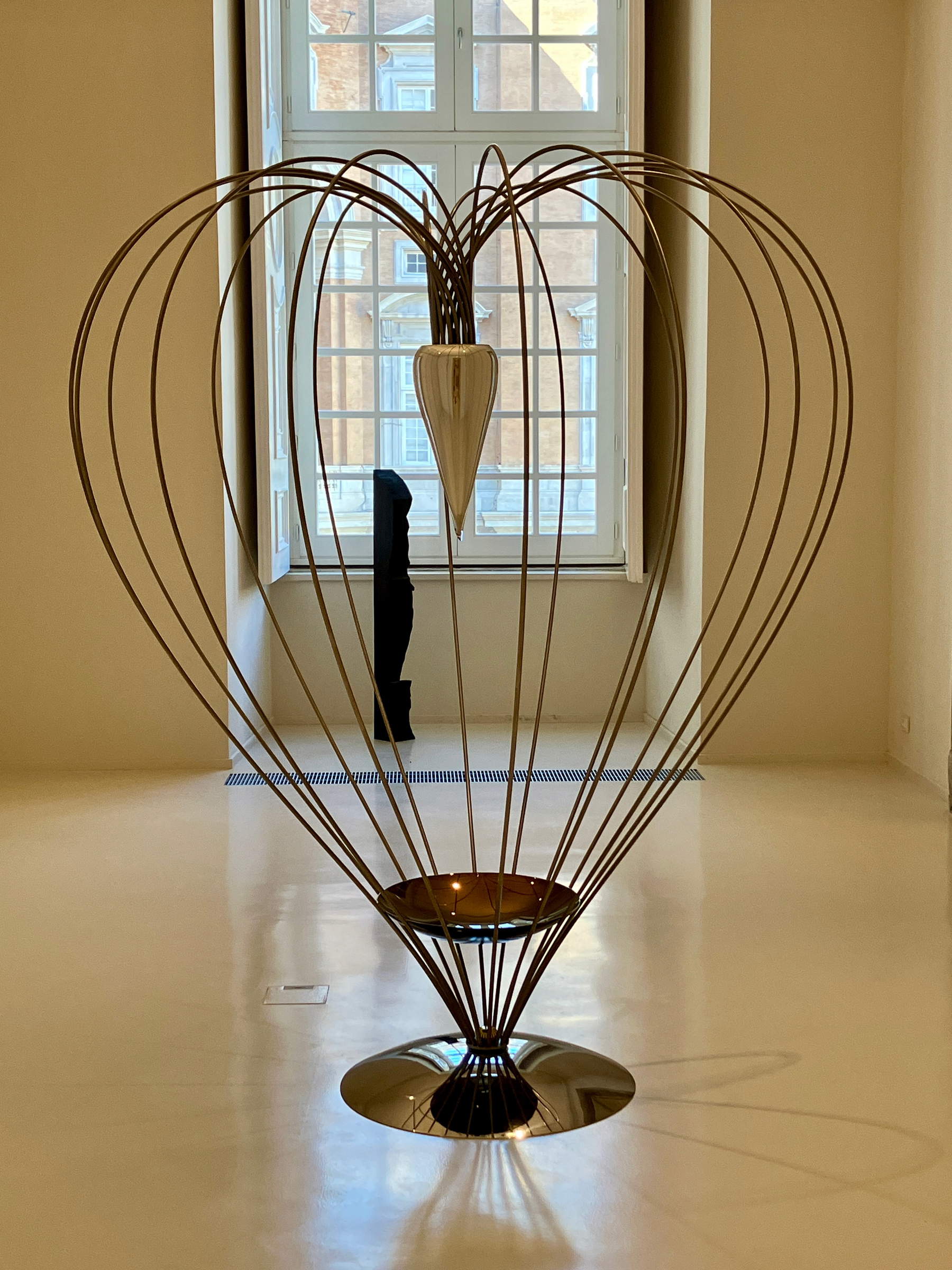The Royal Palace of Caserta presents from July 25 to September 23, 2024 an exhibition dedicated to artist Marco Bagnoli, entitled Marco Bagnoli. La pietra il sol rivegga curated by Marina Guida. The exhibition, set up in the courtyard and Grand Gallery, is contemplated within the Call for Participatory Enhancement of the Royal Palace of Caserta.
Bagnoli chose as the title for his exhibition at the Royal Palace of Caserta part of the words written by Luigi Vanvitelli on the first stone of the Royal Palace, “La pietra il sol rivegga.” The courtyard features the artist’s site-specific project, Locus Solis, an installation nearly five meters high consisting of a vase that rotates on itself. The work’s title is in assonance with that of Locus Solus, Raymond Roussel’s best-known work. In the exhibition rooms of the Grand Gallery, the wing of the Royal Palace, there are eleven other works such as In the Landscape of Xvarnah from 2019, Aleph from 1997, and Origin from 1992, composed of materials such as gold threads, ceramics, alabaster, and glass. Bagnoli’s works take visitors on a journey for the purpose of a greater understanding of the workings of the universe. The project is organized by Turin-based Giorgio Persano Gallery and Studio Trisorio, with the contribution of Soprarno.
“It is a kind of journey then, of ideas, of visions, in time and space, toward a greater understanding of the mechanisms of nature and the universe. The approach that the artist takes, and which denotes the entirety of his work, is certainly philosophical, as well as scientific, connoted by a very strong symbolism that rests on reflection around the concepts of light, stone and mutual contamination,” says curator Marina Guida.
Marco Bagnoli class of 1949, with a scientific background and a degree in chemistry, is a significant presence in the international art scene. Just think of his participation in the Venice Biennale (1982, 1986, 1997), documenta in Kassel (1982, 1992) and Sonsbeek in Arnhem (1986); his solo shows at prestigious art institutions such as De Appel, Amsterdam (1980 and 1984), Centre d’Art Contemporain Genève (1985), Musée Saint-Pierre Art contemporain, Lyon (1987), Magasin, Centre National d’ Art Contemporain, Grenoble (1991), Castello di Rivoli (1992), Centre per l’Luigi Pecci Contemporary Art, Prato (1995), IVAM, Centre del Carme, Valencia (2000), České Muzeum Výtvarných Umění, Praha (2009), Civico Planetario Ulrico Hoepli, Milan (2011), Madre, Museo d’Contemporary Art Donnaregina, Naples (2015), Museo del Novecento, Milan (2022); to his passages in major museums, from the National Gallery of Modern Art in Rome to the Centre Georges Pompidou in Paris. The generation of artists, to which Marco Bagnoli belongs, that emerged, more or less compactly, between the late 1970s and the following decade, from Remo Salvadori to Jan Vercruysse, through Ettore Spalletti, Franz West, Reinhard Mucha, Thomas Schütte, Shirazeh Houshiary, and Anish Kapoor, just to name those of them to whom Bagnoli came closest, practiced the place of the exhibition as the one in which theory as praxis is realized. Bagnoli in particular began from 1981, and continues to the present time, to occupy places of historical and religious tradition in the territory of origin and belonging that he recognizes and in which he recognizes himself, Tuscany, in that initial 1981 was the Villa Medicea La Ferdinanda in Artimino.
It will then be the turn of Filippo Brunelleschi’s Pazzi Chapel in 1984, the Octagonal Hall of the Fortezza da Basso in 1989, the Forte di Belvedere in 2003 and 2017, the Boboli Gardens in 2013, and the Stazione Leopolda in 2014. The Basilica of San Miniato al Monte from 1992 until 2018 with the Millennial celebration. Having then had an initial scientific education his art trespasses from chemistry to alchemy and physics, in the same way that it transitions from esotericism to mysticism, recognizing what Ananda K. Coomaraswamy called a metaphysical tradition. “Space X Time” he calls the red band in golden proportion that constitutes his cipher. He delves into the Upanishads and intones Rumi. At the same time it looks at the last declinations of Western Art as manifested there before its decline, from Cézanne to Malevič, Joseph Beuys to Mario Merz. In June 2020, the fountain Fifty-six Names, 1999-2000, was reinstalled after restoration near the entrance to the Rivoli Castle. Also from June 2020 As Archer Figure, 1993-2019, is in Pier E at Fiumicino’s Leonardo da Vinci Airport. On May 5, 2017, the Atelier Marco Bagnoli opened in Montelupo Fiorentino, a multifunctional space, which the artist conceives as a whole as a total work of art (Gesamtkunstwerk), and which in some of its spaces hosts the ever-changing temporary exhibition of his works from 1972 to the present, curated by Pier Luigi Tazzi. In 2018, Germano Celant, Marco Bagnoli, Skira, Milan, a monograph edited by Celant, who is also responsible for the introductory essay, was published, containing a chronology, signed by Celant himself together with Antonella Soldaini, which includes texts and memoirs by the artist.




 |
| At the Royal Palace of Caserta, Marco Bagnoli's works lead to the discovery of the workings of the universe |
Warning: the translation into English of the original Italian article was created using automatic tools. We undertake to review all articles, but we do not guarantee the total absence of inaccuracies in the translation due to the program. You can find the original by clicking on the ITA button. If you find any mistake,please contact us.